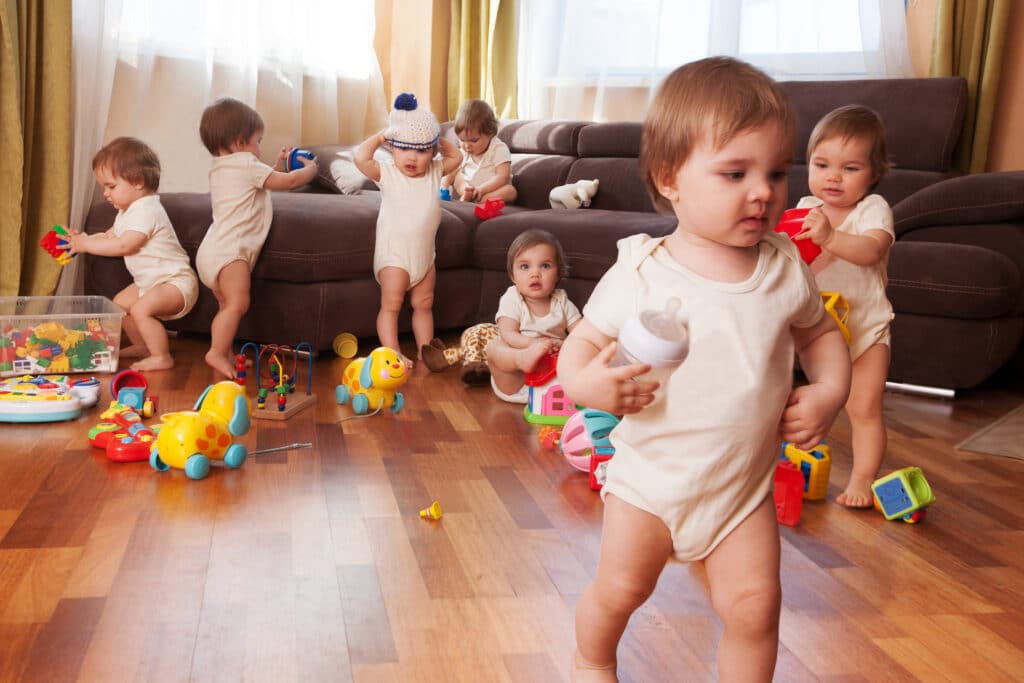Australia is experiencing a “baby recession” according to KPMG with the number of births dropping in 2023 to the lowest recorded since 2006.
It’s the sharpest drop in birth since the 1970s, a period that saw widespread adoption of the pill as well as economic stagnation.
So, should we be surprised to see the number of births across the country falling by 4.6 per cent year on year?
With the cost of living crisis, along with the “cost of working” crisis, as The Parenthood describes it in disussing early childhood education fees, the costs of having a baby are surely on the minds of potential parents, along with the costs of having a second, third or more.
Australia recorded 289,100 births in 2023, according to the KPMG Australia report released this week, with the drop following the “pandemic baby boom” of the 2020 to 2022 period.
The drop in births is more pronounced in capital cities, dropping 8.6 per cent from 2019 in Sydney and 7.3 per cent in Melbourne. Canberra is the only capital city to have seen no drops in birth since 2019, with Terry Rawnsley, an urban economist with KPMG, suggesting this birth stabilisation is linked to CPI growth being slightly subdued in Canberra compared with other cities and that families are not “hurting as much as those in other capital cities.”
“Birth rates provide insight into long-term population growth as well as the current confidence of Australian families,” Rawnsley said.
Immediate cost of living concerns are just part of the “costs” of having a children in Australia.
There is a much broader cost of parenting crisis at play, one that largely continues to impact women.
Women are still taking on the brunt of the cost of career interruptions and periods of flexible and part-time work, which continue to penalise their earning capacities and accumulate to see women retiring with a third less in superannuation than men.
The average 25-year-old woman who goes on to have one child can expect $2 million less in lifetime earnings when compared to the average 25-year-old man who also enters parenthood, according to analysis based on current work trends.
A woman’s earnings are reduced by 55 per cent on average during the first five years of parenting her child, while a new father’s earnings remain unaffected.
In 2024, despite the changes we’ve seen in remote working and opportunities for more flexible work, bias and stigma remain regarding the management and leadership opportunities offered to those who can’t work a more traditional-style working week.
Just seven percent of managers in employers are more than 100 people working part-time in Australia, according to 2023 data from the Workplace Gender Equality Agency. This staggering figure highlights the “part-time promotions cliff,” which affects opportunities for pay rises and greater income earning potential and weighs on the minds of people considering how they’re raising children.
Women will also find their access to paid work limited by other factors – their time and energy among them, with women spending 30.2 hours a week on unpaid care and housework, compared to 21.8 hours a week for men.
As for sole parents, the cost of parenting is significantly higher. Eight in ten sole-parent households are headed up by women, with a massive 37 per cent of these households found to be living below the poverty line, according to a 2020 UNSW/ACOSS report on Poverty in Australia. As advocacy groups have previously shared, many more such families don’t meet the “below the poverty line” definition but are struggling daily with financial hardship.
Research shows a population needs a birth rate of 2.1 children per women to sustain itself (in most cases). Australia’s rate fell below that in the 1970s before rising in the late 2000s thanks to the introduction of the Commonwealth Baby Bonus, as well as more access to childcare, but then fell to a low of 1.59 in 2020.
Globally, the total number of births per woman has falled from 5.3 in 1963 to 2.3 in 2022, according to World Bank data.
And yet, curiously, governments and want-to-be governments issuing plans to crack down on immigration levels are rarely as invested in policies that would help better support parents in having children and therefore sustainable population growth. Such policies include stronger paid parental leave, affordable quality childhood education, better support for single parents and stronger measures enabling parents to have sustainable flexible careers.
If we’re concerned about Australia’s birthrate, we should immediately consider the cost of parenting and especially how women take on the bulk of this debt.


